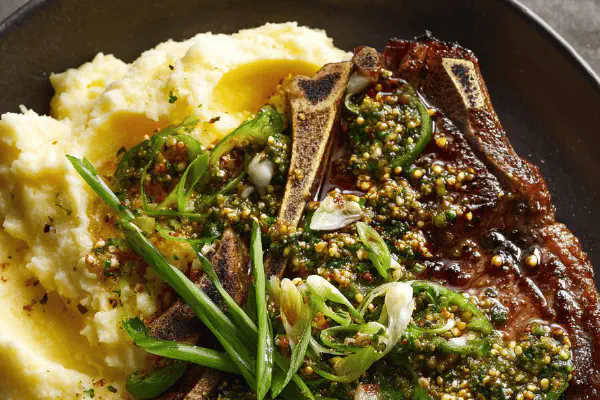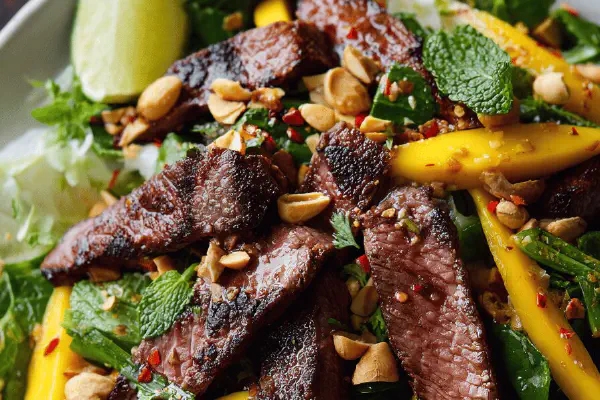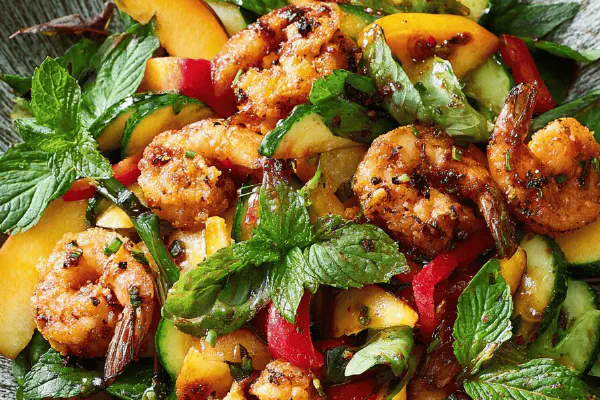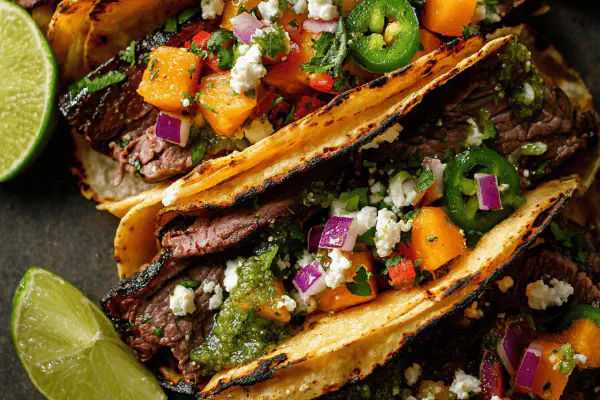Featured Recipe
Grilled Pears with Maple Lime Glaze

By Kate
"
Pears grilled over high heat until tender with a lightly caramelized surface. Citrus juice brightens the fruit, while a sticky maple-lime glaze replaces honey and lemon for added depth. Pears softened but still holding shape, grill marks visible, caramel scents wafting. Simple, fruit-focused dessert without gluten, nuts, dairy, or eggs. Quick, approachable method for summer cookouts or weeknight treats. Tactile doneness cues emphasized over timers.
"
Prep:
10 min
Cook:
15 min
Total:
25 min
Serves:
4 servings
grilling
fruit dessert
summer recipes
Introduction
Pears grilled over high heat until tender with a lightly caramelized surface. Citrus juice brightens the fruit, while a sticky maple-lime glaze replaces honey and lemon for added depth. Pears softened but still holding shape, grill marks visible, caramel scents wafting. Simple, fruit-focused dessert without gluten, nuts, dairy, or eggs. Quick, approachable method for summer cookouts or weeknight treats. Tactile doneness cues emphasized over timers.
Ingredients
About the ingredients
Choice of pears matters: Bartlett gives classic smooth sweetness and softer flesh, Anjou keeps a bit firmer structure. Avoid grainy, mealy fruit, especially beyond prime ripeness. Lime juice swaps for lemon here; lime’s sharper, with fragrant citrus oils that pair well with maple syrup’s deep notes. Maple syrup stands in for honey—less floral, more caramel, better on heat without burning too fast. Neutral oil on grill grate essential for fruit release; no oil on pears themselves. Cinnamon optional but recommended for those wanting complexity. Salting finished pears with flaked sea salt or freshly cracked pepper induced unexpected, balanced contrast. Good substitutions: lemon juice if lime unavailable, agave syrup for maple but watch caramel rate and sweetness level. If no grill, use grill pan but watch for scorch spots. For unstable grills, foil under pears maintains caramel contact without melting into ash.
Method
Technique Tips
Preheating grill paramount; hot surface sears sugars quickly, avoids drying out fruit. Oil the grate lightly with paper towel dipped in oil using tongs—too much oil makes flare-ups, too little causes sticking. Coating pears lightly in glaze, not soaking, avoids dripping combustion and intensifies caramelization on surface. Cutting pears uniformly helps cook evenly. Watch for audible sizzle, color change—grill marks should be dark brown, not pitch black. Turning carefully prevents tearing tender fruit. Timing flexible by minute to accommodate heat variation and fruit ripeness. Testing tenderness with tip of paring knife or fork; should meet slight resistance but pierce easily near center. Removing from heat too early leaves texture chalky, too late turns to mush. Letting pears rest warm finishes cooking gently, redistributes juices. Drizzling extra glaze after cooking boosts sweetness and shine for presentation. Tossing in finishing salt or spice as last step brightens flavor and cuts syrupy cloying notes. Avoid overcrowding grill to ensure even heat.
Chef's Notes
- 💡 Ripeness of pears is crucial. Too hard? They won't caramelize well. Too soft? They'll fall apart on the grill. Look for pears with slight give.
- 💡 Clean grill grates before starting. Dust and residue can lead to sticking. Oil the grates lightly—use a paper towel with oil, holding with tongs.
- 💡 Grilling times can vary. Grapple with heat levels. Listen for that sizzle. Watch for browning. The goal? Grill marks and softened but firm texture.
- 💡 Turn pears using a spatula and tongs—watch for tearing. Those grill marks indicate progress. Aim for a beautiful caramelization, not burning.
- 💡 Don’t overcrowd the grill. Space out pears to ensure heat distribution. Helps them cook evenly. Ensures they don't stick together and mush up.
Kitchen Wisdom
What if pears are too hard?
Let them ripen a bit more. If too firm on grill, raise heat slightly. Tenderness matters for caramelizing properly.
Can I use other fruits?
Absolutely, look at peaches or pineapples. Different flavors, change glaze slightly for pairing. Monitor grilling closely.
What's the best way to store leftovers?
Refrigerate in an airtight container. Reheat gently. But they can lose texture. Consider adding glaze again.
What if I don’t have a grill?
Use a grill pan indoors instead. Works, but check for scorching. Foil can help if you’re worried about sticking.



